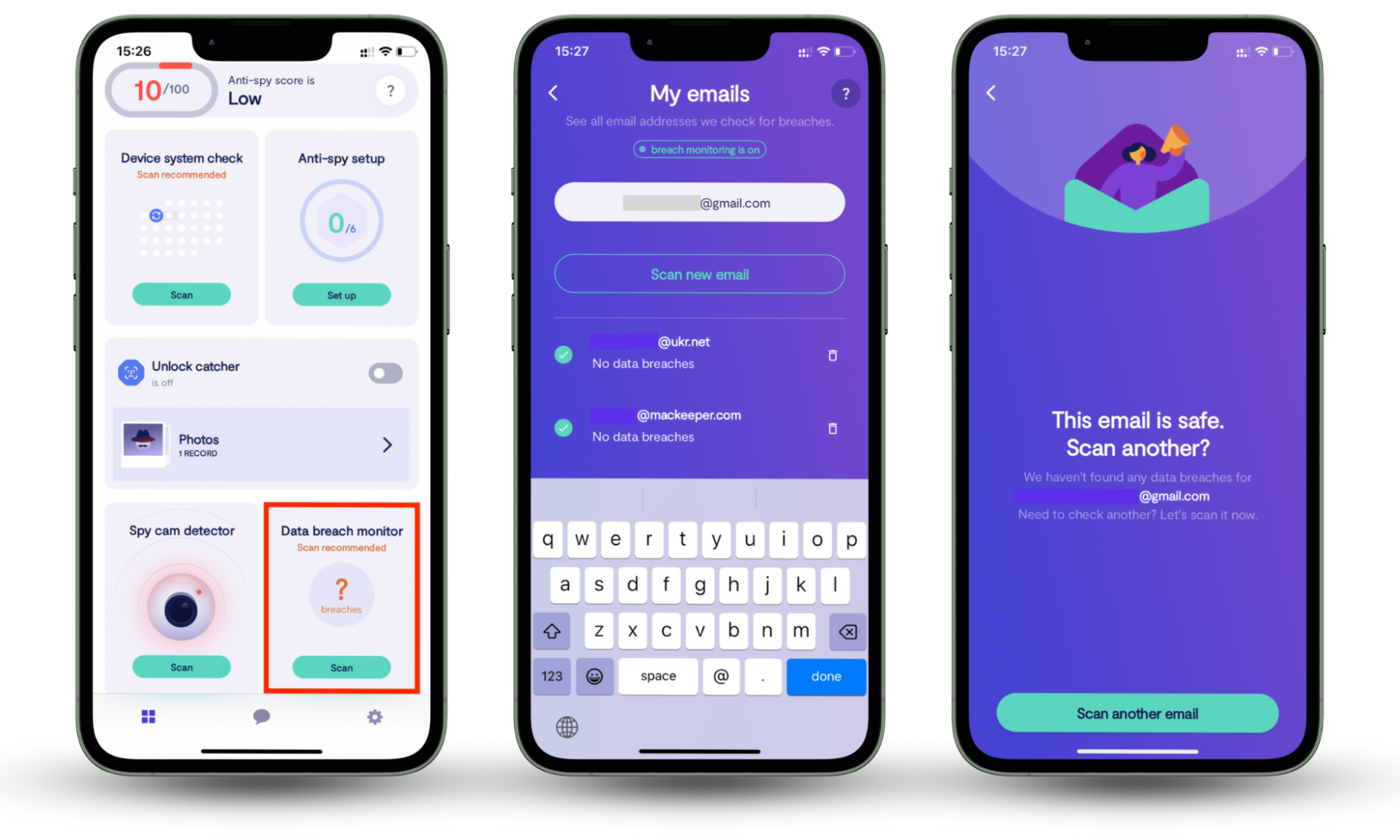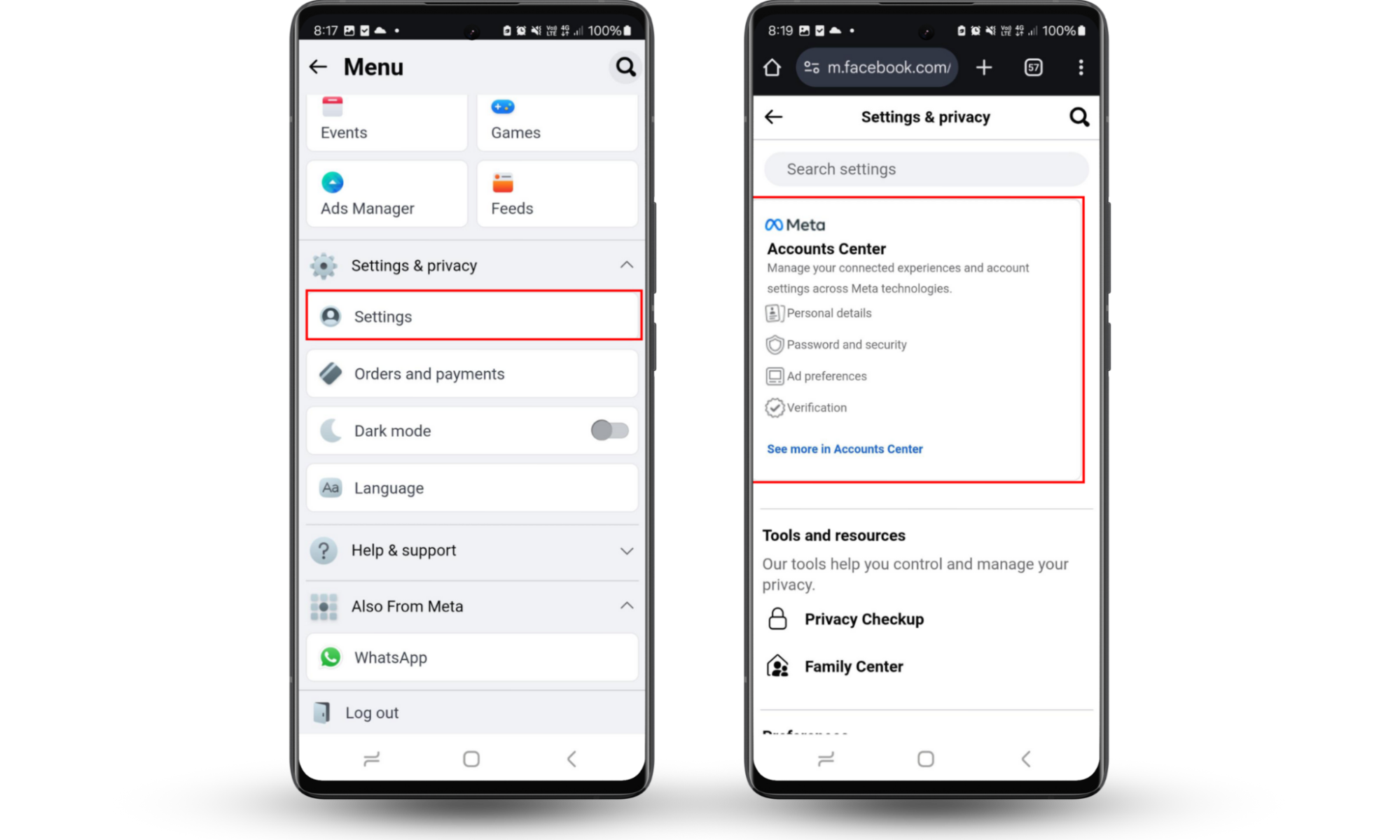Table of contents
- Why do people hack Facebook accounts
- What’s first thing you should do if your Facebook gets hacked
- 1. Confirm that your account was actually hacked
- 2. Try to log in and report hack to Facebook
- 3. Change your passwords
- 4. Tell your friends or family that your Facebook account was hacked
- 5. Review and remove suspicious permissions or apps
- 6. Strengthen your account login security
- 7. Adjust your Facebook privacy controls
- What to do if you can't recover your Facebook account after it was hacked
- How to protect your Facebook account from hackers
- Conclusion
Why do people hack Facebook accounts
Hackers mostly target Facebook accounts for financial gain. They use your profile to scam your friends or request money to give your account back. Others steal your personal details to commit identity fraud or break into your linked accounts—like banking or email apps.
Some hacks involve social engineering. These scammers impersonate you and try to manipulate your contacts with phishing techniques. In more serious cases, there are more personal motivations—they may be stalkers seeking to harass or blackmail you.
Whether it’s opportunistic or personal, the aim is to exploit your personal information or relationships to gain money or control. Next, you need to know what to do when a Facebook account is hacked. And if you’re still wondering, find out how do Facebook accounts get hacked.
What’s first thing you should do if your Facebook gets hacked
If you’re suspicious about someone hacking your account, make sure it really happened first. Take a look at how to know if your Facebook account has been hacked. Change your passwords, tell your friends, and increase your account security next.
Here’s the first thing you do when you get hacked on Facebook:
1. Confirm that your account was actually hacked
Before you act, make sure it’s a real hack. Check for login alerts from unknown locations, unfamiliar devices in your activity log, and messages you didn’t send.
Also look for changes to your profile—including new passwords or email accounts. If you’re locked out, that’s a major red flag.
However, look out for cloned accounts. Sometimes, scammers create a duplicate account using your name and photos to deceive your friends. In this case, your original account is secure, but you should let your friends and family know.
2. Try to log in and report hack to Facebook
Log into your account if you can. If that fails, go to facebook.com/hacked. Facebook will walk you through the steps you need to take to confirm your identity and secure your account. Hopefully, you’ll be able to retrieve your Facebook before the hacker causes too much damage.
3. Change your passwords
Once you’ve regained access, change your Facebook password immediately. But don’t stop there. If you’ve reused your password on other sites, change those too. Hackers often try the same credentials on different platforms.
Create a strong, unique password using at least twelve letters, numbers, and symbols. Avoid anything guessable, like birthdays or pet names. For extra security (and less hassle), use a password manager to store your passwords.
If you’re worried that someone has leaked your password online, Clario Anti Spy can help. Here’s how to use the Data breach monitor to scan the internet for signs of your credentials:
- Download Clario Anti Spy and create an account.
- Under Data breach monitor, press Scan.
- Enter your email address, and Clario Anti Spy will tell you if it’s been a part of a breach.

4. Tell your friends or family that your Facebook account was hacked
Hackers will try their hardest to impersonate you and send phishing links or fake requests for money to your contacts. Just in case, let everyone know that someone hacked you.
For example, your friends might get a Messenger text along the lines of:
- “Hey, I’m in a tight situation. Could you lend me some money?”
- “I just made $500 from this site, check it out [link to a malicious website]”
- “I can’t believe what you did in this video! [link to a phishing site]”
Reporting the problem on your profile and messaging key contacts directly will also prevent them from becoming victims.
5. Review and remove suspicious permissions or apps
Hackers can maintain access to your Facebook account by connecting malicious third-party apps. Even after you change your password, these apps can continue to access your data or perform actions on your behalf.
To check for and remove suspicious apps:
- Go to Settings & privacy > Settings > Apps and Websites.
- Review the list of active apps and websites connected to your Facebook account.
- Remove any apps you don't recognize by clicking Remove next to the app's name.

6. Strengthen your account login security
Two-factor authentication (2FA) stops most issues, even if someone has your password.
To turn on 2FA:
- Go to Settings & privacy > Settings > Accounts Center.
- Choose Password and security.
- Select Two-Factor Authentication and follow the on-screen instructions.


Next, review devices under Where You’re Logged In and remove any suspicious devices that aren’t yours.
7. Adjust your Facebook privacy controls
The less public your profile is, the harder it is for Facebook scams to exploit your info. Here’s how to tighten your Facebook privacy controls and limit what strangers can see and do:
- Go to Settings & privacy > Settings.
- Change all the “Who can see” options—Posts, Reels, and so on—to Friends.

What to do if you can't recover your Facebook account after it was hacked
If the hacker changed your email, phone number, or login info, the standard recovery process might not work completely. Go to facebook.com/hacked and follow the prompts first. Here’s the solution if your FB account is hacked and that link doesn’t work:
- Submit a government ID: Go to Facebook’s Help Center at facebook.com/help/contact/183000765122339 and submit your ID to prove your identity.
- Use a trusted device or browser: If Facebook recognizes the device you’re using, it might give you more reclaim options.
- Secure any linked accounts: Change your password and fix all privacy settings for any linked profiles, like Instagram or Gmail.
- Ask friends to report the profile: Multiple reports may prompt faster action from Facebook.
If you regain access but feel your account is still compromised, consider temporarily deactivating it under Settings > Account Center > Personal details > Account ownership and control. This limits further misuse while you resolve the problem and restore your account.
If you can’t regain access—and unfortunately, this is often the case—create a new account, try to delete (or disable) your old one, and let everyone know to ignore and report it.
How to protect your Facebook account from hackers
Good security doesn’t stop at a strong password, solid privacy controls, and 2FA. Even with the basics in place, hackers can still find ways in. Here’s how to stay a step ahead:
- Ignore weird messages, even from friends: If it sounds off or includes a sketchy link, don’t click. Message them another way to check.
- Avoid logging in on public or shared devices: Libraries, cafés, and borrowed laptops are dangerous. Use your own device when possible.
- Don’t use Facebook to log into other apps: It’s convenient but risky. If your Facebook happens to get hacked, so do the apps linked to it. Learn if it’s safe to sign in with Facebook.
- Turn on login alerts: Facebook can notify you when someone opens your account from a new device. Find this under Security and Login.
- Keep your recovery info up to date: Make sure your phone number and backup email are current. You’ll need them if you ever get locked out.
- Be careful with browser extensions: Some can monitor your recent activity. Stick to trusted tools from reputable developers.
Conclusion
Remember—a Facebook hack doesn’t always stop at Facebook. The sooner you act, the more likely you’ll be able to cut it off before it spreads. The trick is knowing what to do if your Facebook page is hacked. First, make sure you are indeed hacked. Once confirmed, try logging in and reporting it. If you can log in, change your passwords immediately and enable two-factor authentication.
In the meantime, check if your data is already out there with Clario Anti Spy’s Data breach monitor. Use it to catch leaks before a scammer does.


